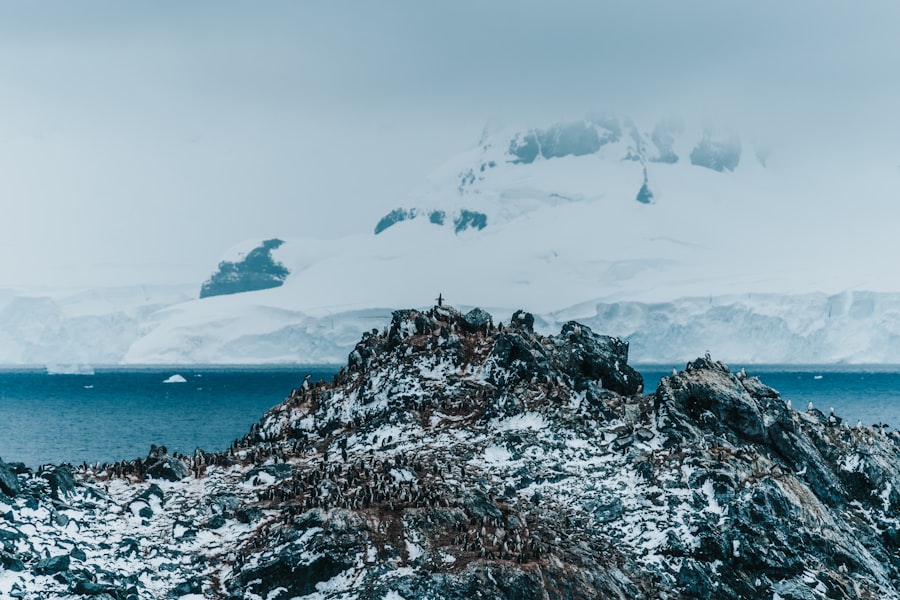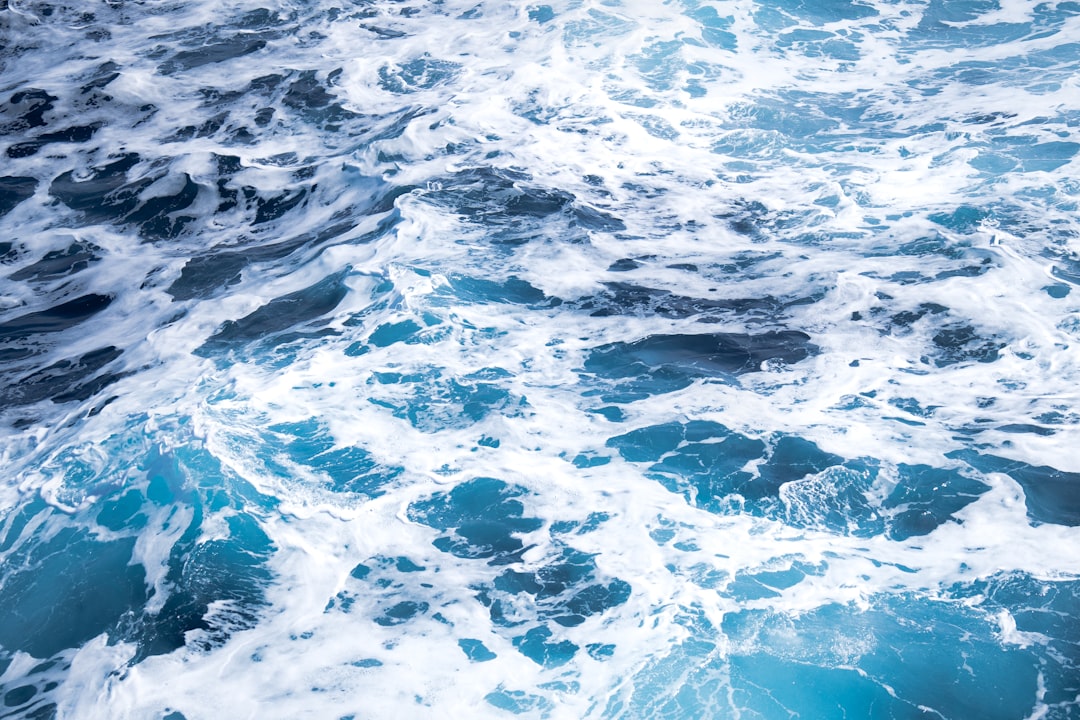The Drake Passage, a body of water that separates South America from Antarctica, is renowned for its tumultuous seas and unpredictable weather. Stretching approximately 600 miles, this passage is not only a critical maritime route but also a significant point of interest for adventurers and researchers alike.
For those who dare to traverse this formidable stretch, the Drake Passage offers both challenges and rewards, making it a focal point for exploration and discovery. As one of the most famous maritime routes in the world, the Drake Passage has captured the imagination of sailors, scientists, and travelers for centuries. Its strategic importance cannot be overstated; it serves as a gateway to the Antarctic region, facilitating access to one of the last great wildernesses on Earth.
The passage is not merely a geographical feature; it embodies the spirit of adventure and the quest for knowledge that has driven explorers throughout history. For many, crossing the Drake Passage is a rite of passage, a test of endurance that promises unforgettable experiences and encounters with nature in its rawest form.
Key Takeaways
- The Drake Passage is a treacherous body of water located between South America’s Cape Horn and the South Shetland Islands of Antarctica.
- Francis Drake, an English explorer, is known for being the first to navigate the passage in 1578, leaving a lasting legacy on the route.
- The Drake Passage presents challenges such as strong winds, rough seas, and unpredictable weather, making it one of the most feared stretches of water in the world.
- Proper preparation, including packing appropriate gear and medication for seasickness, is essential for a safe and comfortable journey through the Drake Passage.
- Navigating the unpredictable weather of the Drake Passage requires experienced and skilled crew members to ensure a smooth and safe passage for travelers.
The Legacy of Francis Drake
Francis Drake, an English sea captain and explorer of the late 16th century, is often credited with being one of the first to navigate these treacherous waters. His legacy is deeply intertwined with the history of the Drake Passage, as he was instrumental in charting parts of the region during his circumnavigation of the globe. Drake’s voyages were marked by daring exploits and significant contributions to maritime navigation, making him a pivotal figure in the Age of Exploration.
His name has become synonymous with adventure and discovery, inspiring countless others to follow in his wake. Drake’s journey through the passage was not without peril. He faced fierce storms and unpredictable currents that tested his skills as a navigator and sailor.
His successful crossing not only solidified his reputation but also opened up new routes for trade and exploration. The legacy of Francis Drake extends beyond his navigational achievements; it encompasses the spirit of exploration that continues to drive adventurers to this day. His story serves as a reminder of the courage required to face the unknown and the rewards that come from venturing into uncharted territories.
Understanding the Challenges of the Drake Passage

The challenges presented by the Drake Passage are numerous and formidable. Sailors must contend with strong winds, powerful currents, and rapidly changing weather conditions that can turn calm seas into raging storms within moments. The infamous “Drake Shake,” as it is colloquially known, can create waves that tower over vessels, making navigation a daunting task.
Understanding these challenges is crucial for anyone planning to cross this notorious stretch of water. Moreover, the passage is characterized by its unique geography, which contributes to its unpredictable nature. The convergence of the Atlantic and Pacific Oceans creates a dynamic environment where weather patterns can shift dramatically.
This unpredictability requires sailors to be well-prepared and adaptable, ready to respond to changing conditions at a moment’s notice. The challenges of the Drake Passage are not merely physical; they also test the mental fortitude of those who dare to navigate its waters, demanding resilience and determination in equal measure.
Preparing for the Journey
| Stage | Tasks | Metrics |
|---|---|---|
| Research | Gather information, identify resources | Number of sources, time spent |
| Planning | Create itinerary, make reservations | Number of bookings, budget |
| Packing | Prepare essentials, check weather | Number of items, weight of luggage |
| Health check | Visit doctor, get necessary vaccinations | Medical clearance, vaccination records |
Preparation is key when embarking on a journey through the Drake Passage. Adventurers must equip themselves with not only the right gear but also a thorough understanding of what lies ahead. This includes studying weather patterns, understanding maritime navigation techniques, and ensuring that vessels are seaworthy and well-stocked with supplies.
Knowledge about potential hazards, such as icebergs and shifting currents, is essential for safe passage. In addition to physical preparation, mental readiness plays a significant role in successfully navigating the Drake Passage. Travelers should be aware of the psychological challenges posed by long periods at sea and the potential for seasickness due to rough waters.
Engaging in training exercises or simulations can help build confidence and familiarity with maritime conditions. Ultimately, thorough preparation can make all the difference between a harrowing experience and an exhilarating adventure through one of the world’s most iconic maritime routes.
Navigating the Unpredictable Weather
Weather in the Drake Passage is notoriously unpredictable, often changing from calm to chaotic in a matter of hours. Sailors must remain vigilant and adaptable, constantly monitoring weather forecasts and adjusting their plans accordingly. The region’s unique climatic conditions arise from its geographical location, where cold Antarctic air meets warmer ocean currents, creating a volatile environment that can lead to sudden storms.
Navigating these unpredictable weather patterns requires skill and experience. Sailors must be adept at reading signs of impending changes in weather conditions, such as shifts in wind direction or changes in wave patterns. Additionally, understanding how to maneuver a vessel in rough seas is crucial for safety.
Those who have successfully crossed the Drake Passage often recount tales of navigating through fierce storms, relying on their training and instincts to guide them through treacherous waters.
Wildlife Encounters in the Drake Passage

One of the most enchanting aspects of traversing the Drake Passage is the opportunity to encounter diverse wildlife that thrives in this unique ecosystem. The waters are teeming with life, from majestic whales to playful seals and a variety of seabirds that soar above the waves. For many travelers, these wildlife encounters are among the highlights of their journey, offering glimpses into the rich biodiversity that characterizes this remote region.
The presence of wildlife in the Drake Passage is not merely incidental; it reflects the delicate balance of marine ecosystems that thrive in these cold waters. Observing these creatures in their natural habitat provides valuable insights into their behaviors and interactions within their environment. For researchers and conservationists alike, studying wildlife in this area is crucial for understanding broader ecological trends and ensuring the protection of these species for future generations.
Historical Significance of the Route
The historical significance of the Drake Passage extends far beyond its role as a maritime route; it has been a site of exploration, trade, and cultural exchange for centuries. The passage has served as a vital link between continents, facilitating not only commerce but also scientific research and cultural interactions. Its strategic importance has made it a focal point for various nations throughout history, shaping geopolitical dynamics in the region.
Moreover, the legacy of exploration associated with the Drake Passage has left an indelible mark on human history. The stories of explorers who braved its waters have inspired generations to seek out new frontiers and push the boundaries of human knowledge. The passage stands as a testament to humanity’s enduring spirit of adventure and curiosity—a reminder that there are still uncharted territories waiting to be discovered.
Stories of Exploration and Adventure
The annals of history are filled with tales of exploration and adventure that revolve around the Drake Passage. From Francis Drake’s daring voyages to modern-day expeditions seeking to understand climate change’s impact on polar regions, each story adds to the rich tapestry of human endeavor associated with this formidable waterway. These narratives often highlight not only individual courage but also collective efforts to push boundaries and expand horizons.
Adventurers who have crossed the Drake Passage often share their experiences with awe and reverence. They recount moments of breathtaking beauty juxtaposed with harrowing challenges—encounters with towering waves followed by serene sunsets over icy waters. These stories serve as both inspiration and cautionary tales for those who wish to follow in their footsteps, reminding them that every journey through this passage is unique and fraught with its own set of trials.
Safety Measures and Precautions
Safety is paramount when navigating the Drake Passage, given its reputation for rough seas and unpredictable weather conditions. Mariners must adhere to strict safety protocols to ensure their well-being while at sea. This includes conducting thorough vessel inspections before departure, ensuring all safety equipment is functional, and having contingency plans in place for emergencies.
Additionally, communication plays a crucial role in maintaining safety during transit through these waters. Regular updates on weather conditions and potential hazards should be communicated among crew members or fellow travelers. Training in emergency procedures—such as man-overboard drills or evacuation protocols—can also enhance safety measures significantly.
By prioritizing safety precautions, adventurers can mitigate risks associated with crossing this challenging passage.
Tips for a Smooth Passage
For those planning to embark on a journey through the Drake Passage, several tips can help ensure a smoother experience. First and foremost, travelers should choose their timing wisely; understanding seasonal weather patterns can significantly impact conditions at sea. Late spring or early summer often presents more favorable weather for crossing.
Packing appropriately is equally important; layers are essential due to fluctuating temperatures, along with waterproof gear to combat splashes from waves. Additionally, staying hydrated and maintaining proper nutrition can help combat seasickness—a common challenge faced by many during their journey through these turbulent waters. Finally, fostering camaraderie among fellow travelers can enhance morale during challenging moments at sea, turning potential hardships into shared adventures.
Conquering the Drake Passage with Francis Drake
In conclusion, traversing the Drake Passage is an endeavor steeped in history and adventure—a journey that echoes the legacy of Francis Drake himself. As modern explorers set sail across these storied waters, they carry with them not only their own aspirations but also the spirit of those who came before them. The challenges posed by this formidable passage serve as both obstacles to overcome and opportunities for growth.
Ultimately, conquering the Drake Passage is about more than just reaching a destination; it embodies humanity’s enduring quest for exploration and understanding. Each crossing adds another chapter to an ongoing narrative—a testament to resilience, courage, and an unyielding desire to discover what lies beyond the horizon.
The Drake Passage, named after the famed explorer Sir Francis Drake, is a significant body of water that connects the Atlantic and Pacific Oceans. It is renowned for its challenging navigation conditions and historical importance in maritime exploration. For those interested in learning more about the geographical and historical context of the Drake Passage, a related article can be found on MyGeoQuest. This resource provides insights into various geographical phenomena and historical explorations. To explore more about the Drake Passage and its significance, you can visit the article on MyGeoQuest.
WATCH NOW! Drake Passage: Earth’s Deadliest Waters Revealed
FAQs
What is the Drake Passage?
The Drake Passage is a body of water located between the southern tip of South America and the northern tip of the Antarctic Peninsula. It connects the southwestern part of the Atlantic Ocean with the southeastern part of the Pacific Ocean.
Who was Francis Drake?
Sir Francis Drake was an English sea captain, privateer, and explorer who lived during the 16th century. He is best known for being the first Englishman to circumnavigate the globe and for his involvement in the defeat of the Spanish Armada.
What is the significance of the Drake Passage?
The Drake Passage is known for its notoriously rough and unpredictable seas, making it one of the most challenging and dangerous maritime routes in the world. It is also an important passage for the circulation of ocean currents and marine life between the Atlantic and Pacific Oceans.
How did the Drake Passage get its name?
The Drake Passage is named after Sir Francis Drake, who is believed to have been the first European to sail through the passage during his circumnavigation of the globe in the late 16th century.
What is the climate like in the Drake Passage?
The climate in the Drake Passage is characterized by strong winds, high waves, and cold temperatures. It is known for its stormy and unpredictable weather, which can make navigation through the passage extremely challenging for sailors and explorers.
